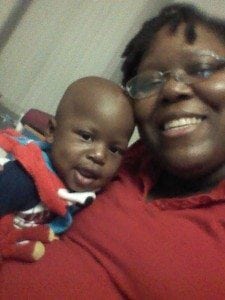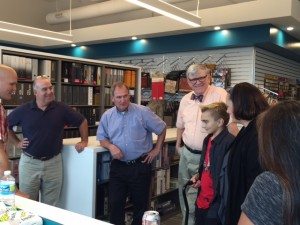There are so many things patients and families love about Chemo Duck. But this time, we want to want to share the love. 
Here are two groups Chemo Duck loves to quack about: The Cooper Trooper Foundation and The Sarah Grace Foundation.
The Cooper Trooper Foundation (CTF) supports the fight against cancer in two ways – one by raising money to help fund research into pediatric cancer and the other by helping distribute Huggable Hope, the companion to Chemo Duck for siblings of patients going through cancer treatment.
Huggable Hope is part of the Courage Kit created by CTF. The organization sends out hundreds of kits every year to siblings all across the country.
“It’s hard to balance giving them the attention they need when you are caring for a sick child,” said Missy Cook, founder of CTF. “They are unintentionally left out. They are the heroes in the shadows and this was a small way to let brothers and sisters know they are very much a part of the fight.
“Our kit is intended to support siblings, celebrate them and encourage them.”
Cook, whose youngest child will be cancer free for six years, knows first-hand the need for sibling interaction. Her two older children were inspiration for the kits.
CTF compliments the work that Lu Sipos, founder of Chemo Duck, strives to achieve.
“We are not able to serve any of the siblings through our program,” said Sipos. “We absolutely love partnering with Cooper’s Troopers because they are doing all the same things we are focused on, but with the sibling in mind. They are a wonderful resource and we love their mission.”
Sipos says she was one lucky duck to learn about the Sarah Grace Foundation, which helps children and their families during the challenge that childhood cancer brings.
For the past five years, the foundation has sponsored Chemo Ducks for about eight hospitals in the New York region. 
“When our daughter was sick, we did not have something like Chemo Duck,” said Matthew Weippert, founder of the foundation. “We were so intrigued by the application of the program. We fell in love with how patients connected to it and how well it taught and explained treatment procedures to them. We love how children can personalize it too.”
For Sipos the foundation’s commitment to distribute chemo ducks is not the only reason she admires the organization.
“They also advocate for bereaved parents,” said Sipos. “I feel so strongly about that part of their mission. There are just so many pieces of the puzzle when dealing with families living with childhood cancer. This is a journey with many layers and I am happy to be associated with them.”








 We will continue to discuss the different chapters from our digital
We will continue to discuss the different chapters from our digital 

